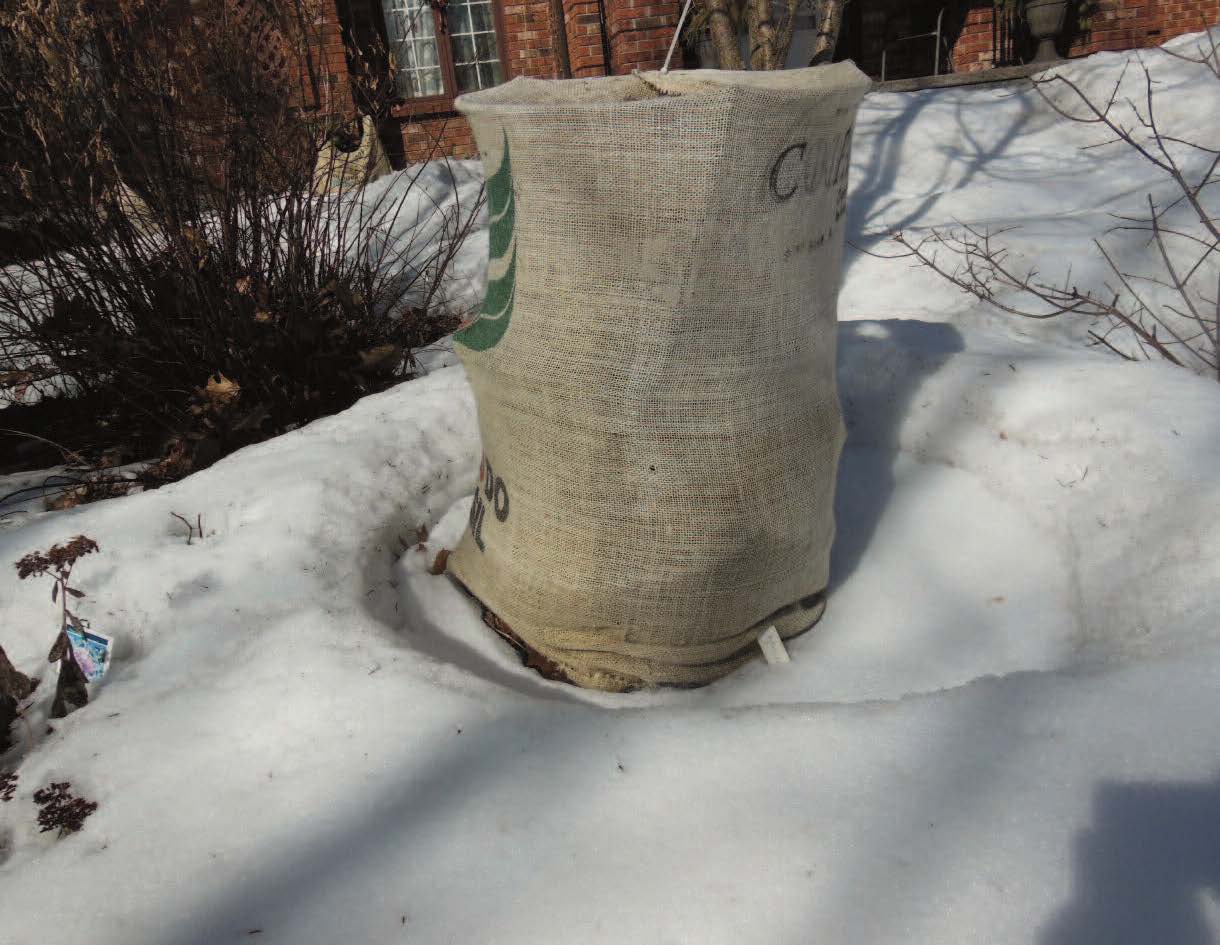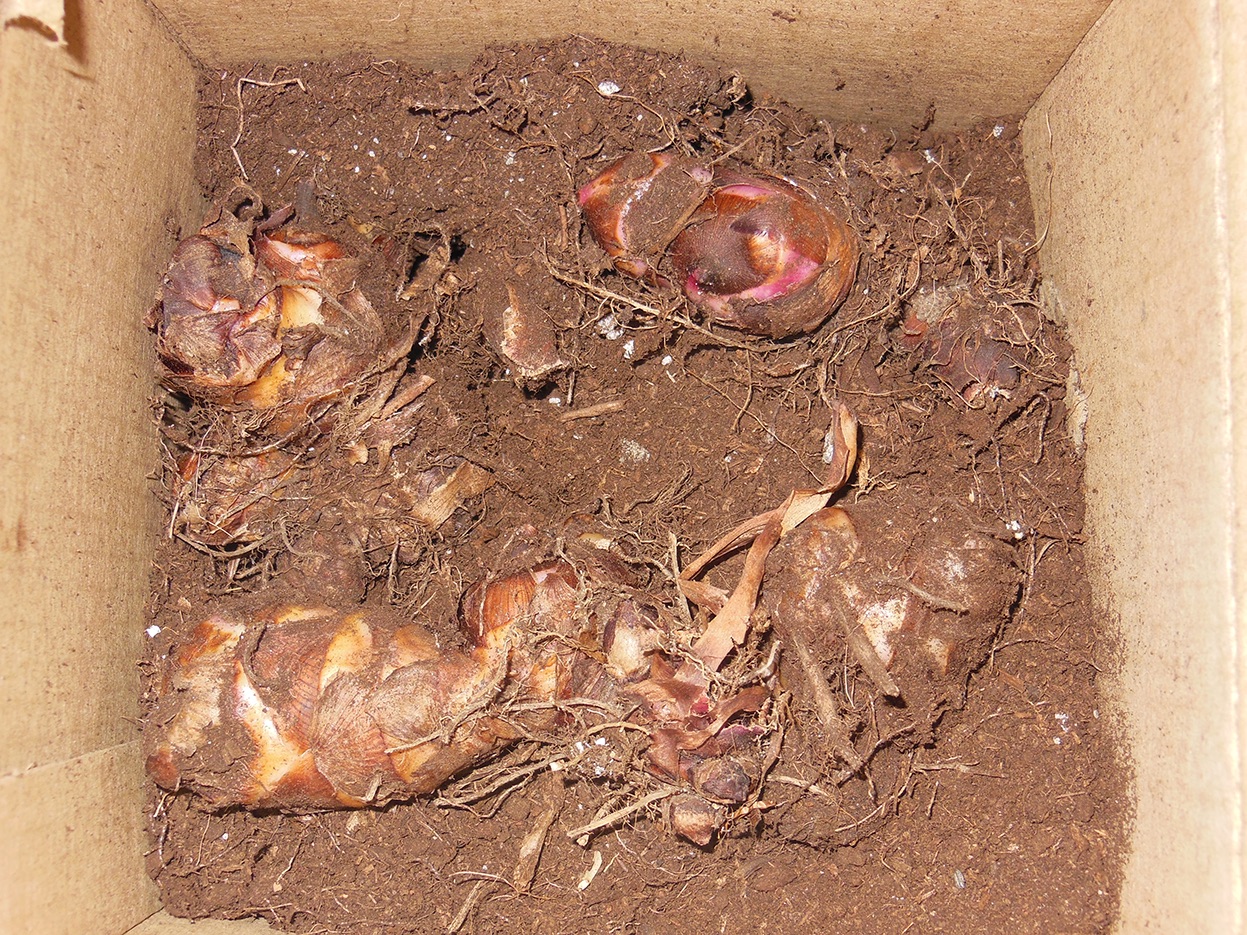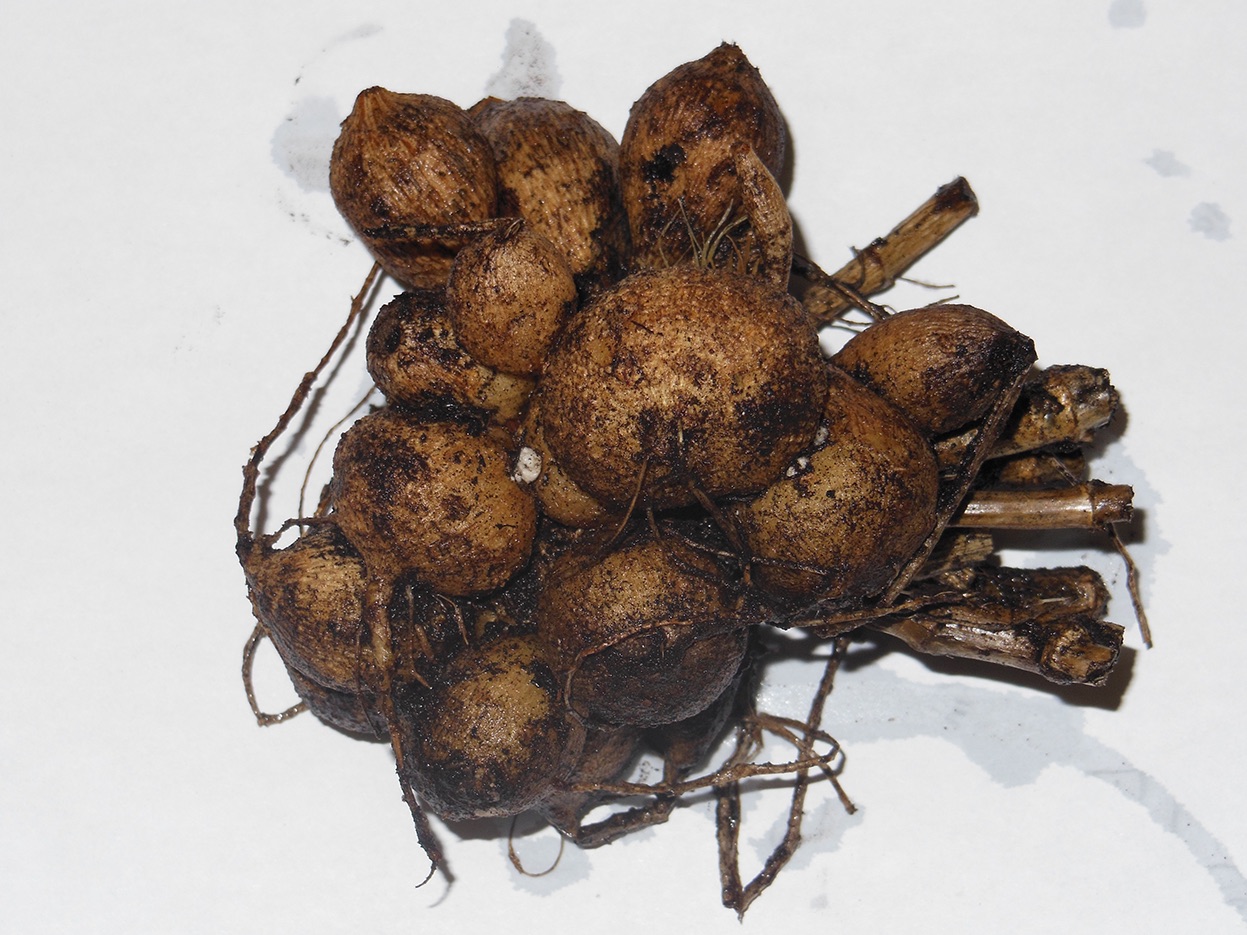
Ready for the spring
By Diane McClymont Peace | September 2019
Now is the time to think about putting your garden to bed. Our winters seem to be getting more unpredictable and extreme — hot one day and cold the next, sometimes very windy, sometimes with intense sun, lots of snow or no snow at all. These weather extremes can put extra stress on plants. Let’s look at what you need to do to prevent damage to your plants to ensure they remain as healthy as possible.
Deciduous trees and shrubs
The trunks of trees and tall shrubs should be wrapped with a plastic tree wrap/guard or wire mesh to protect from rodents or rabbit damage or winter freeze-thaw cycles. Tender trees and shrubs can also be painted or sprayed with a purchased repellent to protect them from rodent and rabbit damage. Inspect trees and shrubs for insect eggs or larvae. Eggs can be scraped off and webbing brushed off.
Remove fallen leaves from roses, heavily mulch and cover especially the tender ones. Canes can be pruned back now, in the spring, or at both times if needed. Long canes, however, that could be damaged by ice and wind should be cut back now. Late flowering shrubs can either be pruned now or in spring — your choice. For large flowering shrubs, such as hydrangeas, it is advisable to prune now as the weight of the snow could damage branches. Tender shrubs such as butterfly bushes, endless summer hydrangeas, and Japanese maples should be wrapped in winter felt and heavily mulched with leaves.
Evergreen trees and shrubs
It is most important to water these plants well until the ground is frozen. They should also be protected from winter burn with burlap, cones, tents or winter felt and supports (euonymus, rhododendrons, yews, lavender). Conical evergreen shrubs that may bend or break, such as spruce and cedar, can be tied-up with string, fishing line or even Christmas lights.
Early-flowering perennials
Foliage should be trimmed as it fades on many perennials — irises, lupines, daylilies, lilies, astilbes, geraniums and persicarias, for example — and composted if not diseased. Peony foliage should be discarded because of the possibility of mildew. Lastly, mulch tender plants with leaves for the winter.

PHOTO: DIANE MCCLYMONT PEACE
Broadleaf evergreen perennials
Because plants such as Christmas rose, coral bells, foam flower, foamy bells, bugleweed and Bergenia retain their leaves, it is important to water them well until the ground is frozen. Dead leaves should be trimmed, and the plants covered with mulched leaves or peat moss, once the ground is frozen. Any dead leaves from the winter can be trimmed in the spring.
Late-flowering perennials and grasses
Perennials should be trimmed to the lowest leaves or rosettes. You can remove the flower stalks of cone flowers, black-eyed Susans, sea-hollies, globe thistles, Japanese anemones, Annabelle hydrangeas, tall sedums, and tall grasses. Leave some seedheads for winter interest and as food for birds. Consider adding grass plumes to winter planters, along with pruned evergreen boughs and red and yellow dogwood stems.
Vines
Prune any wayward branches and cage or treat vine bases with a repellent to prevent rodent and rabbit damage. Climbing roses are best removed from their support and buried. Clematis vines should not be pruned — any dead branches can be pruned in the spring. Grape vines should be pruned (usually severely) according to variety and maturity. Lastly, check lattices for security.
Tender bulbs and tubers
Tender bulbs and tubers should be dug up, dried in the sun, soil brushed off and their tops trimmed. They can be dusted with fungicide powder, if needed. Store them in peat moss in paper bags or cardboard boxes labelled with colour and height if known, in a cool protected area (basement, cold room). Examples are agapanthus, acidantheras, gladiolas, dahlias, cannas, callas, tuberous begonias, and sweet potatoes. For amaryllis bulbs, let them dry or repot and store until flower stalks appear in the spring.
Lawns
Leaves should be raked so the grass can still benefit from the fall sun. You may have to rake several times. Leaves can be mulched with a lawn mower, if they are large or coarse (oak leaves) and stored for future such as to protect tender perennials and shrub. If not already done, the lawn can be fertilized with a fall fertilizer high in nitrogen and iron.
Vegetable gardens
It is always helpful to photograph or map where vegetables were growing, to help with next year’s placement. Vegetation and weeds should be removed and composted when not diseased. This is a good time to plant garlic bulblets. Raspberry canes that have fruited should be pruned out as they most likely will not bear fruit again. This is a good time to add well-rotted manure or compost, as the freeze-thaw cycle over the winter will work the compost into the soil. Otherwise, you can seed a green crop such as alfalfa, buckwheat or clover for the winter. It can be dug-in during the spring to add nutrients to the soil.
Pond
Any leaves and other debris should be removed with pond nets and plastic rakes. Any dead vegetation in pots should be removed and discarded. If pots are overgrown, the plants should be trimmed, divided and repotted (waterlilies, water lotuses, pickerel weed, irises). Any tender plants such as papyruses and rain lilies should be repotted and stored indoors for the winter. Tender water lily tubers can be stored indoors in peat moss. Lastly, if needed, drain and clean the pond.
Miscellaneous
If you have not already done this, drain and clean your hoses, bird baths and rain barrels. Also remember to clean, sharpen, and organize tools for winter storage. Now is a good time to make a list of the tools, seeds, and plants you might need for next year.
There may be many tasks to do, but by doing the majority of the work now, it will mean less to do in the spring. Lastly, don’t forget to get out in the winter to enjoy your gardens and check what is happening.

PHOTO: DIANE MCCLYMONT PEACE
Cleaning and storing tools for the winter
The fall is a good time to clean and sharpen your gardening tools. Clean tools with a good scrub brush, and wipe with a solvent if there is sticky residue on any blades. Blades should be sharpened with a sharpening stone and cleaned with oil to reduce rusting. These tasks will make pruning and digging much easier in the coming year.
Mulch
Fall is a good time to add compost to the garden beds and unhealthy or sunken parts of the lawn. Once the ground is well frozen, you can add any leaf mulch remaining to further protect the beds.
Edging the gardens
If you have time, edging your gardens in the late fall helps them look neat, well-tended, and ready for next season.
Diane McClymont Peace has a master’s degree in Environmental Science, a certificate in Horticulture from University of Guelph and is a graduate of the Horticulture Industries Program at Algonquin College. Most of her gardening experience, however, comes from working at a garden centre and from trials and errors as a home gardener. Diane volunteers with the Master Gardeners of Ottawa-Carleton.






